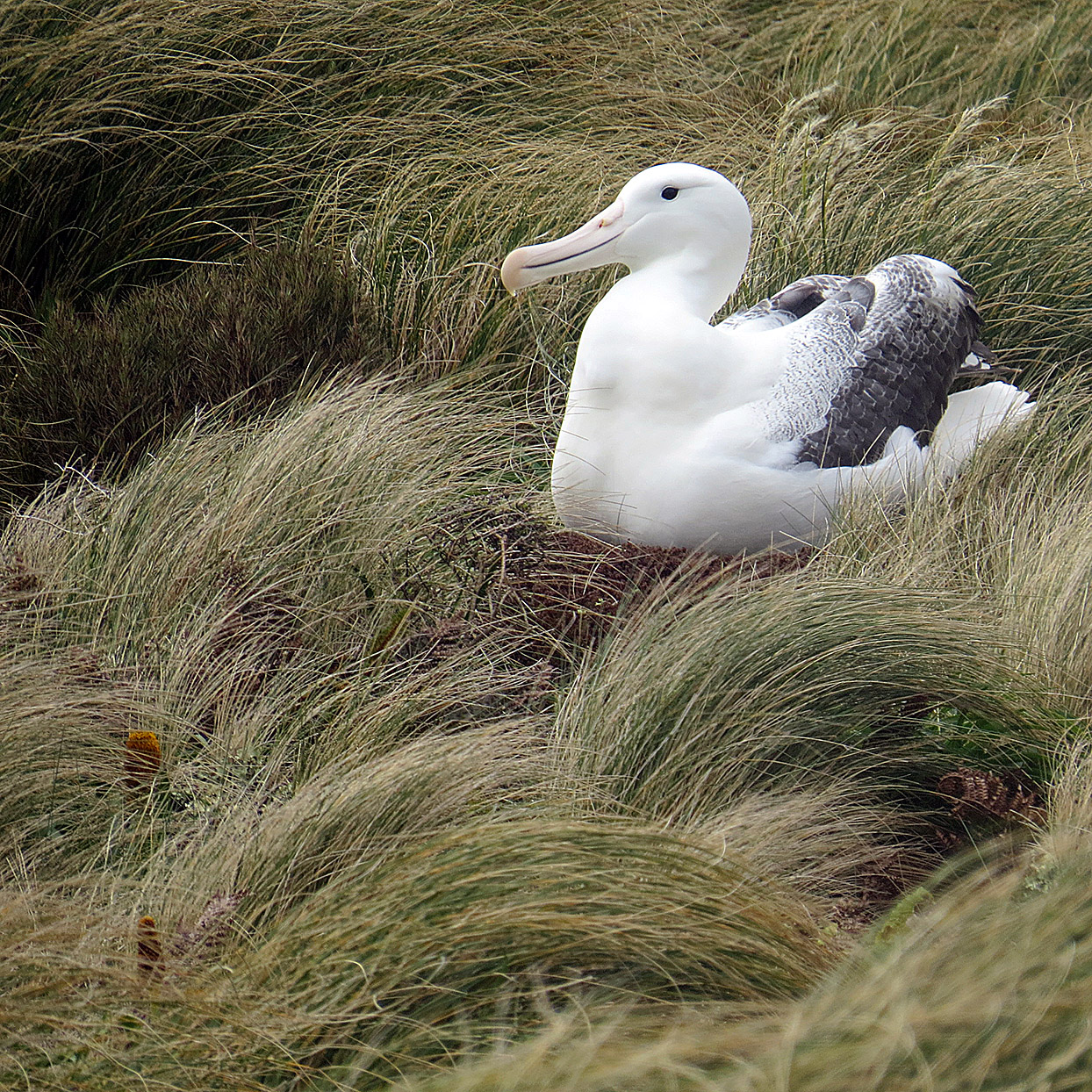Bird flu likely on its way to NZ

INFECTED: The wandering albatross is infected with H5N1 and could reach New Zealand. However, it seldom interacts with other birds.
Paul Charman
With many aquatic environments along its coast visited by migratory bird species, the Eastern Bay is unlikely to be spared the arrival of bird flu.
That’s the message from the Minister for Primary Industries, Andrew Hoggard, who made it clear in a recent interview that it was likely the H5N1 strain of bird flu would reach New Zealand.
An outbreak of the less virulent H7N6 strain of bird flu was reported in December 2024, apparently after ducks infected laying hens at a Mainland Poultry egg farm in Otago, he said.
MPI nipped this outbreak in the bud, implementing strict biosecurity controls, culling 80,000 chickens in two infected sheds and conducting extensive testing and monitoring.
The farm was locked down, and a ban placed upon live and raw poultry for export to markets that required freedom from the virus.
The appearance of H7N6 was bad enough but the more serious H5N1 strain was now spreading globally, having infected wild birds and dairy herds in the United States.
MPI said the latter strain had been reported in 108 countries across five continents, including New Zealand’s Sub-Antarctic Islands.

The viral infection can sometimes spread to humans, causing mild to severe respiratory symptoms and pink eye. People who work with poultry waterfowl and dairy cows are most at risk.
“Another concern is that we don’t know how various strains of bird flu will affect our native bird populations,” Mr Hoggard said.
He pointed out that foot and mouth disease had been flaring in Europe, with outbreaks recently reported in Hungary and Slovakia.
There was an outbreak in Germany in January 2025 but no cases in the UK. Europe has been actively monitoring and implementing measures to prevent further spread of the disease, which could pose a major threat to livestock.
“We can put up protections at borders to keep out foot and mouth but there's nothing we can do about infected migratory birds flying up from Antarctica and the Sub-Antarctic carrying disease to our local wild birds then potentially the poultry industry,” Mr Hoggard added.
Australasia is the only place in the world that does not yet have avian flu. The disease moved down through North America – where it was having a major impact on egg production, appearing in the national dairy herd. It moved through Latin America, island-hopped to Antarctica and around the Antarctic coast, having reached the Indian Ocean side. Seals and sea lions were infected, though apparently not yet the NZ sea lion.
“So, it’s getting around to our (Pacific) side. We can’t stop it coming.”

Egg producers needed to take the threat seriously and get their farms prepared to "do their own little mini lockdowns" to make sure that wild birds can't get into their barns. They need to be able to secure from the outside. So, stop any ingress of any wild bird coming into contact with the chickens."
He said it could be a "massive" problem for free-range producers.
“Other parts of the world still have free range producers, but they work on the basis that they must shut the birds in when they get a warning that bird flu is in the area.”
Mr Hoggard recently announced the successful testing of a portable laboratory for sampling and testing for avian flu in remote locations like Antarctica and the Sub-Antarctic islands.
Biosecurity New Zealand tested the equipment during a voyage to Antarctica on the icebreaker MV Argus.
"This was an incredible opportunity to be able to locate, sample and test for HPAI in the field under extreme conditions," said Mr Hoggard.
"The benefit of this is that samples don't need to be sent to a laboratory for testing, a process which can take weeks from remote locations like Antarctica. Instead, a confirmed result for HPAI H5N1 can be obtained within 48 hours of taking the sample."

MPI systems are world class
MPI is working with other government departments, including the Department of Conservation, in preparing for the arrival of bird flu, Federated Farmers Bay of Plenty provincial president Brent Mountfort said.
“It is worth noting that following the outbreak down south a few months ago, MPI worked successfully to contain it on the farm where it was detected. This new variant will be much harder to contain as it will be in our wild bird population.
“The risk to human and dairy cow health will be minimal as farming practices in New Zealand are very different to those in north America where some animal farming is very intensive and indoors with limited ventilation.
“If and when it hits, and depending on how quickly the outbreak takes to be contained, eggs and chicken could be in short supply, which could result in large price increases for consumers. This would include not just eggs but also products such as baking and of course a Kiwi favourite like pavlova. While we most probably don’t need to stockpile our pavs yet, it is worth keeping this in mind.
“MPI and DoC are actively monitoring the progress of the virus and are well prepared. It is worth noting that MPI is a world class organisation that has highly qualified and trained staff. It wasn’t too many years ago that mycoplasma bovis hit our shores. Despite many so-called experts predicting that we could not eradicate it, here we are with it all but gone. We are the first country in the world to achieve this.”